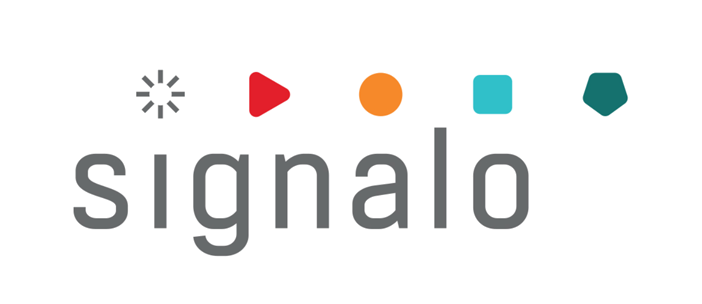Cost optimization in production
Cost optimization in production refers to the process of minimizing expenses while maximizing efficiency and output. It involves identifying and implementing strategies that reduce costs without compromising the quality or quantity of goods or services produced.
The identification of cost drivers in the production process
Cost drivers refer to the factors that significantly impact production costs, determining the amount of resources needed for manufacturing goods or providing services. By identifying these drivers, companies can effectively allocate resources, optimize production processes, and ultimately increase profitability.
Factors contribute to production costs
Raw materials
Constitute a substantial portion of production costs, as they are required for the creation of products. The availability, quality, and price of these materials directly affect overall expenses.
Labor costs
Efficient workforce management, proper skill utilization, and continuous training programs can help minimize labor costs.
Energy consumption
The rising cost of energy sources, such as electricity or fuel, has a direct impact on production expenses. Moreover, implementing energy-saving measures and adopting sustainable practices can significantly reduce these costs in the long run.
Analyzing and optimizing these auxiliary costs can lead to substantial savings for businesses.
Examples
1
In a manufacturing company, the cost of raw materials can rise drastically due to changes in commodity prices or disruptions in the supply chain. This may force the company to seek alternative suppliers or adjust production processes to reduce material waste. By accurately identifying the cost drivers, the company can implement strategies to mitigate the impact of these fluctuations on their bottom line.
2
By identifying the energy-intensive processes and analyzing energy usage patterns, the company may discover opportunities for efficiency improvements. Implementing energy-saving technologies, such as LED lighting or energy-efficient machinery, can lead to substantial cost savings and contribute to environmental sustainability.
Cost optimization strategies
Below a several cost optimization strategies that can be employed in production to achieve these goals.
1. Lean Manufacturing Techniques
This approach focuses on identifying and eliminating waste within the production process, including non-value-added activities. By streamlining operations and minimizing unnecessary steps, lean manufacturing can result in significant cost savings. Examples of waste reduction techniques include improved workflow layout, standardized work processes, and continuous improvement practices.
2. Just-in-Time (JIT) Inventory Management
JIT aims to minimize inventory holding costs by ensuring that materials and components arrive at the production line precisely when they are needed. By reducing excess inventory levels and associated holding costs, organizations can free up capital and improve cash flow. JIT also promotes better demand forecasting and supplier coordination, leading to more efficient production planning.
3. Automation and Technology Implementation
Automation and technology play a vital role in enhancing productivity and efficiency within production operations. By deploying advanced machinery and technologies, organizations can reduce labor costs, improve quality control, and accelerate production turnaround times. Automation can also help eliminate human error and increase overall operational accuracy. Robotic systems, computerized tracking, and data analytics are examples of technologies that can be integrated to optimize production costs.
4. Supply Chain Optimization
Efficient supply chain management is crucial for cost optimization in production. By streamlining procurement and transportation processes, organizations can minimize costs associated with sourcing materials and delivering finished products to customers. This can be achieved through strategic supplier partnerships, centralized purchasing, and optimized transportation routes. Supply chain optimization also involves effective inventory management and demand forecasting to avoid stockouts and overstock situations.
Monitoring and Continuous Improvement
To achieve cost optimization, it is crucial to emphasize the importance of continuously monitoring and measuring efforts.
Indicators (KPIs)
KPIs provide measurable data that allows businesses to evaluate their performance against specific objectives, ultimately helping them make more informed decisions.
- When it comes to cost optimization, businesses can use KPIs such as total cost savings, cost per unit, and cost of goods sold, among others. These indicators can provide valuable insights into the effectiveness of cost reduction initiatives and enable businesses to identify areas where further improvements can be made.
- By regularly monitoring these KPIs, businesses can ensure that their cost optimization efforts are on track and are producing desired results. It also helps in identifying any potential issues or roadblocks that may be hindering progress.
Continuous improvement
Once areas requiring further improvement have been identified, businesses should take proactive steps to address them. This may involve implementing new strategies, processes, or technologies that can help optimize costs and enhance overall operational efficiency.
Continuous improvement should be an ongoing process within an organization, with regular reviews and reassessments of goals and performance. By fostering a culture of continuous improvement, businesses can stay ahead of their competition, adapt to changing market conditions, and drive sustainable growth.
Cost Optimization Tools from Signalo
If you are looking for a way to optimize costs in your company, Signalo software is the solution that can help you. As a leader in cost optimization tools, Signalo offers systems that streamline processes and improve resource utilization efficiency.
Using advanced technologies and data analysis, Signalo helps identify areas where significant cost savings can be made. Their systems monitor activities in real-time, providing valuable insights into operational efficiency. Based on this information, strategic decisions regarding costs and resource management can be made.
With the knowledge and expertise of Signalo’s experts, you will be able to implement changes that bring substantial cost savings to your company. We are proud to collaborate with many innovative companies from around the world, such as Tenneco, Dayco, Knauf, Saint-Gobain, ABB, etc.
Free Consultation
Take advantage of a free consultation at Signalo. Not only will you save time and money, but you will also open the door to cost optimization in your company. With Signalo’s tools, you will be able to operate more efficiently, use resources intelligently, and ultimately achieve better financial results.
Values
Discover the benefits of collaboration
We offer a free consultation as the first step of collaboration, allowing you to familiarize yourself with our approach and verify our advisory competencies. This way, even before making a decision, you’ll feel that your situation and problem have been well understood, and the proposed solution will be optimally tailored to your company’s situation.
Our services (support) are included in a subscription, which does not generate hidden costs. The subscription-based billing allows for a significant reduction in the entry threshold into the system and enables immediate testing.
We are communicationally independent – we can develop our system without depending on the client’s IT department. We do not generate additional work for the client’s IT department. This way, we lower the implementation risk and associated costs. The possibility of quicker implementation of the solution results in faster return on investment.
Login to our applications is secured at a high level, characteristic of banking solutions. At the same time, the login process is intuitive. Your data is as secure as in a bank thanks to our system.
We offer multilingualism in our solutions through real-time translation—each employee operates applications in their native language. This enhances efficiency and reduces costs by expanding the potential labor market and eliminating the need to hire translators.
Our software features an interface optimized for quick, easy, and intuitive use, even by digitally excluded or poorly skilled employees. This means real-time savings in both time and training costs for your workforce in using the new software. The ability for rapid deployment of software for use results in a shorter transition/implementation period.















